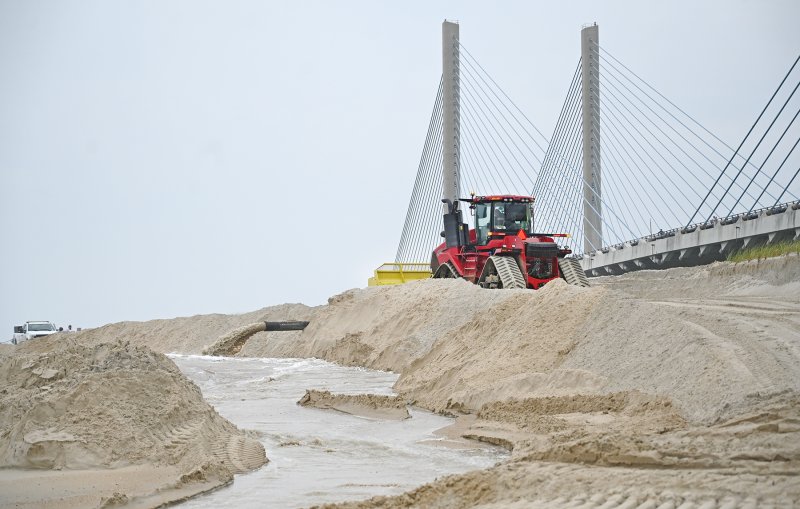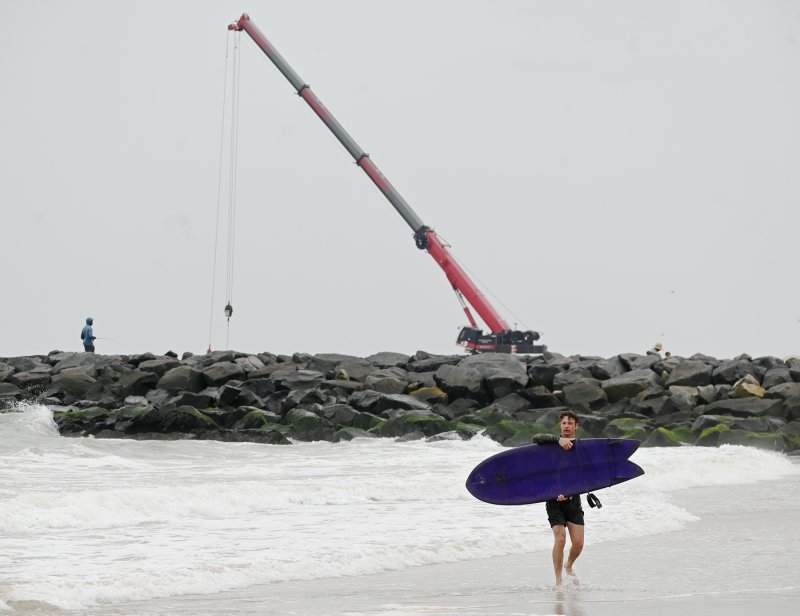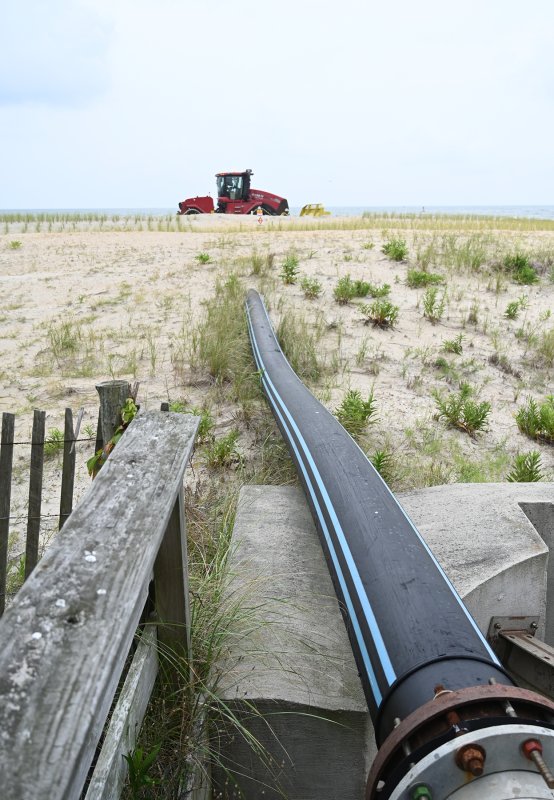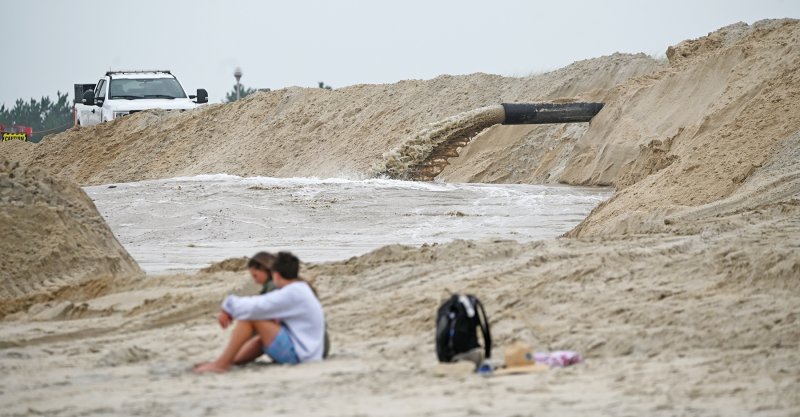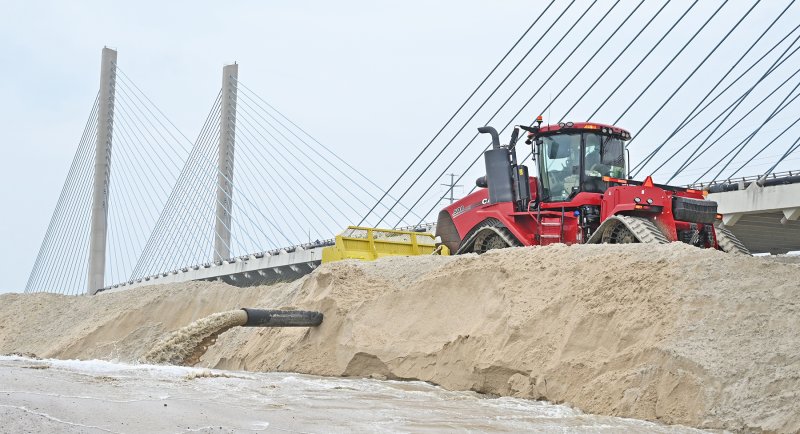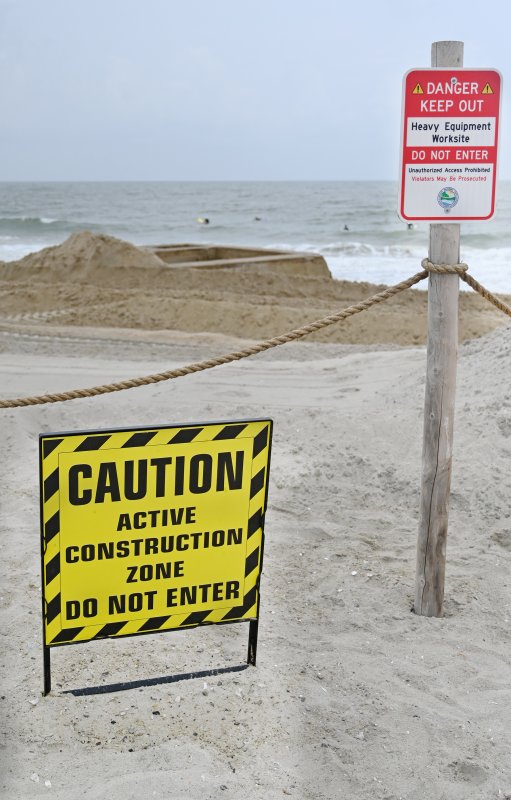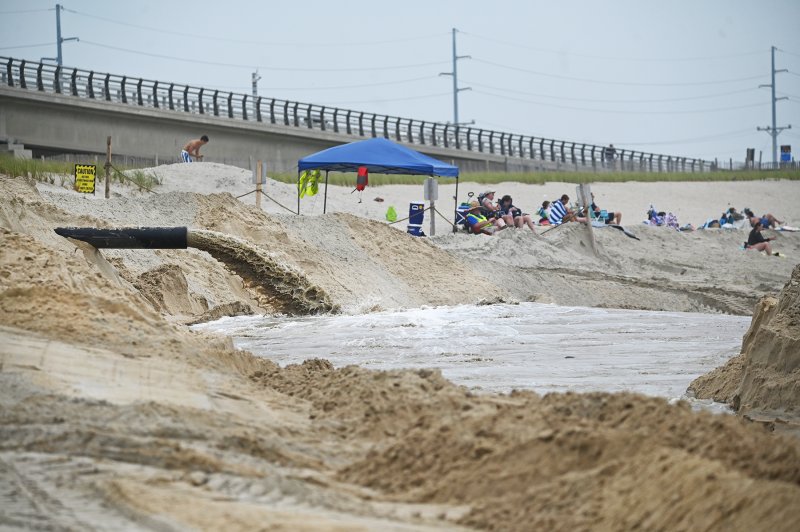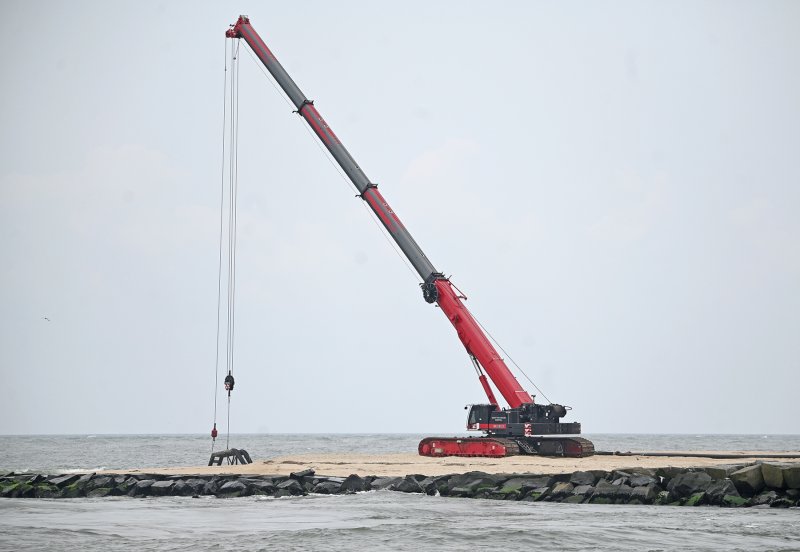The sand bypass system at the Indian River Inlet has completed its scheduled testing for the summer.
The Delaware Department of Natural Resources and Environmental Control estimates about 15,000 cubic yards of material was moved from the south side of the inlet to the north side over the last two weeks of testing. That equates to 7.587 million gallons of slurry — a semiliquid mixture, typically of fine particles in water — transferred to the north side where beach and dune erosion is an ongoing challenge.
The bypass system is a mechanical operation that mimics the natural movement of sand along the Atlantic Coast. Operating the bypass system helps maintain beach width, protect nearby infrastructure and improve coastal resilience. The system was offline for several years and has recently been upgraded with new pumps and a new electric motor. The intention of this summer’s testing was to ensure the upgraded system is fully operational before it is placed into regular service.
The testing period took place 7 a.m. to 2 p.m., every Monday through Thursday from July 14 through Aug. 6. While the bypass did not operate Aug. 7, DNREC used the day to finish any final work required before pausing operations until the winter.
DNREC intends to resume the bypass system relaunch project in the early to midwinter season.
During the testing period, the DNREC Shoreline and Waterway Management Section, which has responsibility for the sand bypass system, set an operational target of 40% slurry density, though initial runs saw some variance as material movement ramped up in earnest over the past seven days, according to DNREC Division of Watershed Stewardship Operations Manager Kathleen Bergin.
Bergin also noted the 40% slurry figure is an estimate based on sensor data, as the primary focus during testing has been on total system startup rather than precise density measurements.
When the sand bypass system relaunches this winter, Bergin said DNREC will work closely with U.S. Army Corps of Engineers to prevent any interference with its upcoming beach nourishment and north jetty repair projects at the inlet.
The Army Corps projects follow the emergency dredging and beach nourishment efforts from DNREC last fall and winter that saw 480,000 cubic yards of sand pushed onto the north side of the inlet. DNREC spokesman Michael Globetti said that contrary to some reports, much, if not most, of the sand pumped during nourishment stayed put through the spring and summer. That sand reinforced and repaired the dune from the two breaches that occurred there last year, Globetti said.
Nick Roth is the news editor. He has been with the Cape Gazette since 2012, previously covering town beats in Milton and Lewes. In addition to serving on the editorial board and handling page layout, Nick is responsible for the weekly Delaware History in Photographs feature and enjoys writing stories about the Cape Region’s history. Prior to the Cape Gazette, Nick worked for the Delmarva Media Group, including the Delaware Wave, Delaware Coast Press and Salisbury Daily Times. He also contributed to The News Journal. Originally from Boyertown, Pa., Nick attended Shippensburg University in central Pennsylvania, graduating in 2007 with a bachelor’s degree in journalism. He’s won several MDDC awards during his career for both writing and photography. In his free time, he enjoys golfing, going to the beach with his family and cheering for Philadelphia sports teams.














